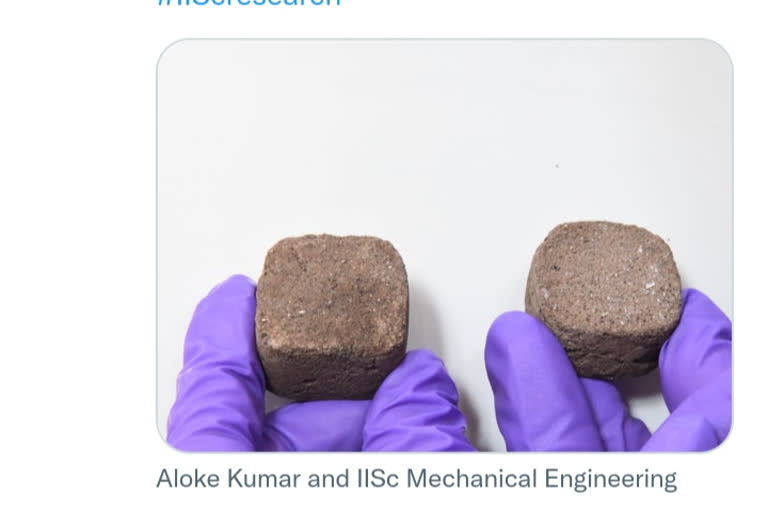Bengaluru: IISC and ISRO researchers have developed a process called biomineralisation to make bricks for usage in space. It's said to be a sustainable method for making bricks out of Martian soil, using bacteria and urea. These “space bricks” can be used to construct structures on Mars that could facilitate human settlement on the red planet.
Aloke Kumar, a professor of mechanical engineering and the team from Tata institute and ISRO, used Martian Simulant Soil (MSS) to build bricks using Microbial Induced Calcite Precipitation (MICP). MSS, which is originally in a powder form turns slowly into a brick in around 15 to 20 days. The bacteria are said to seep deep into the pore spaces, using their proteins to bind the particles together, decreasing porosity and leading to stronger bricks.
The bacteria used was actually soil bacteria from Earth. Martian soil consists of a lot of iron, which is toxic. It also consists of other harmful chemicals that make it difficult for the bacteria to survive and thrive. Nickel chloride provides hospitable conditions to bacteria: To circumvent this toxicity nickel chloride (NaCl 2) is used. Adding nickel chloride is also a key step in making the soil hospitable to the bacteria.
Manufacturing bricks in an organic way: Bacterial growth induced process for manufacturing the bricks are said to be organic. Using a bacterium called Sporosarcina pasteurii, the team of researchers can create calcium carbonate crystals through the ureolytic metabolic cycle. Crystals are formed by bacteria through the pathway using urea and calcium.
Biopolymers acting as cement: Crystals, along with biopolymers secreted by the microbes, act as the cement holding the soil particles together. Furthermore, guar gum, a naturally occurring polymer, was used as an additive to add strength to bricks. Guar gum, which is extracted from guar beans is used in food and industrial applications as a thickening and stabilising agent. Notably, the research group had previously worked on making bricks out of lunar soil, using a similar method.
Read: Made for mission life of 6 months, India's Mars probe completes 7 years in orbit



